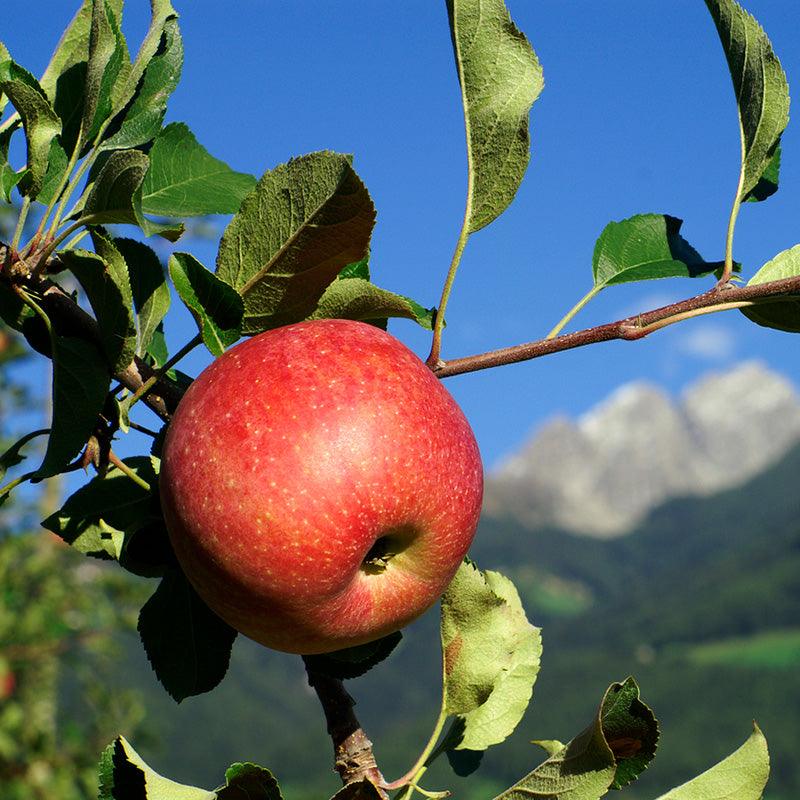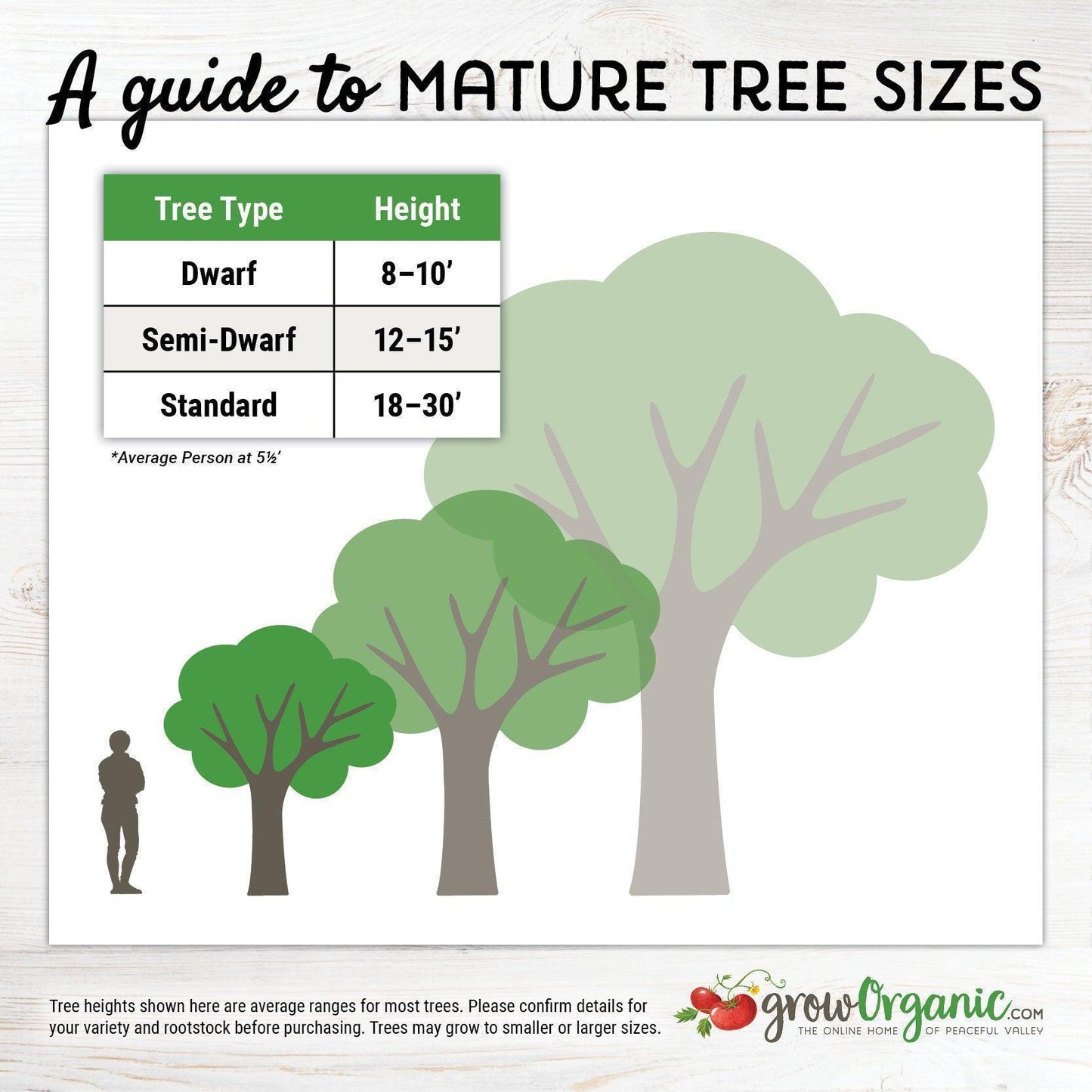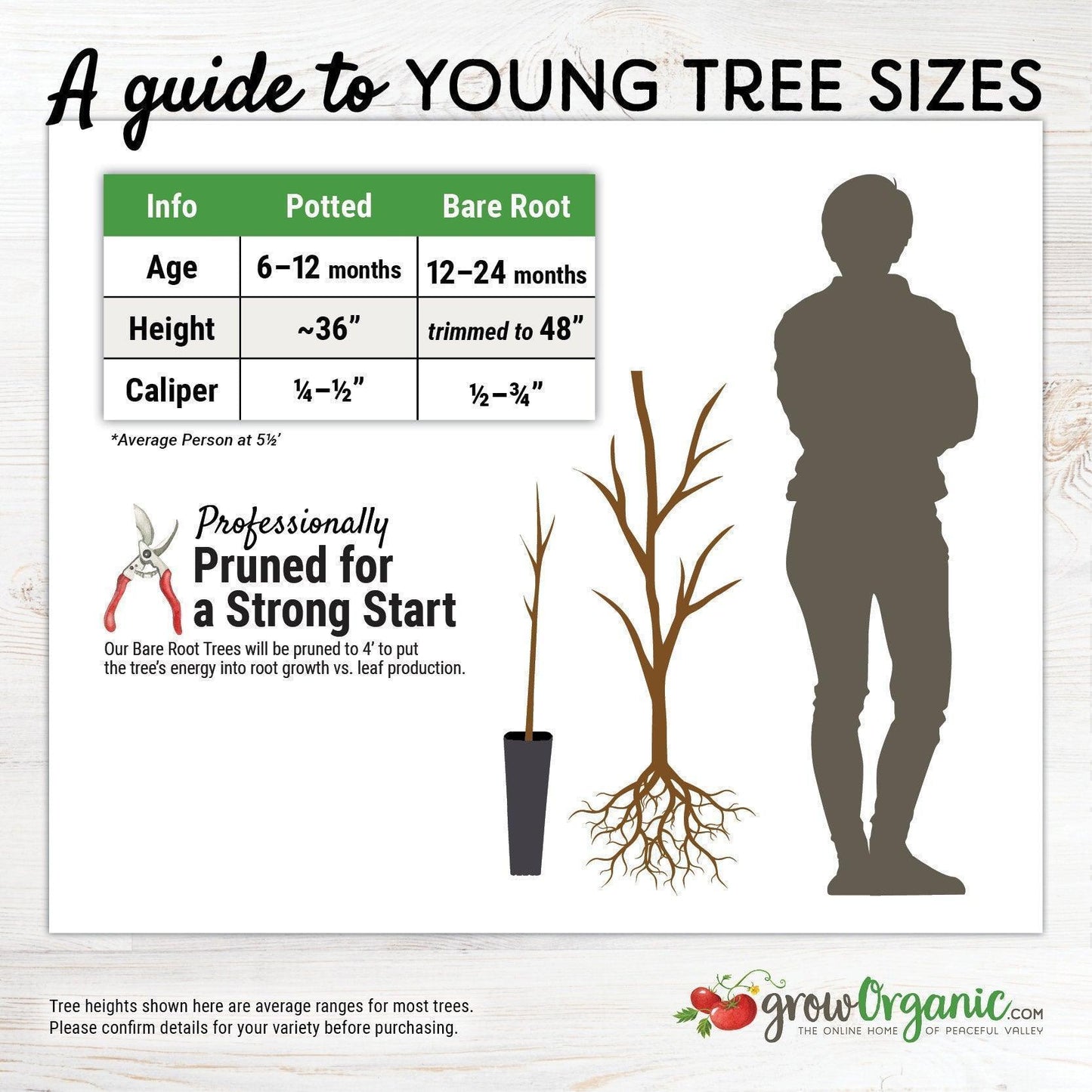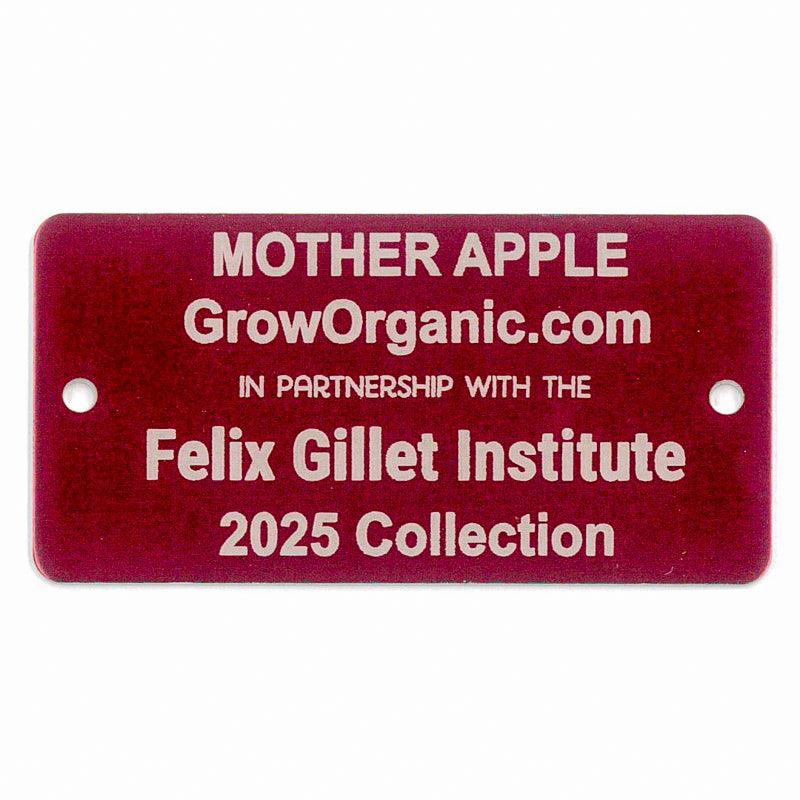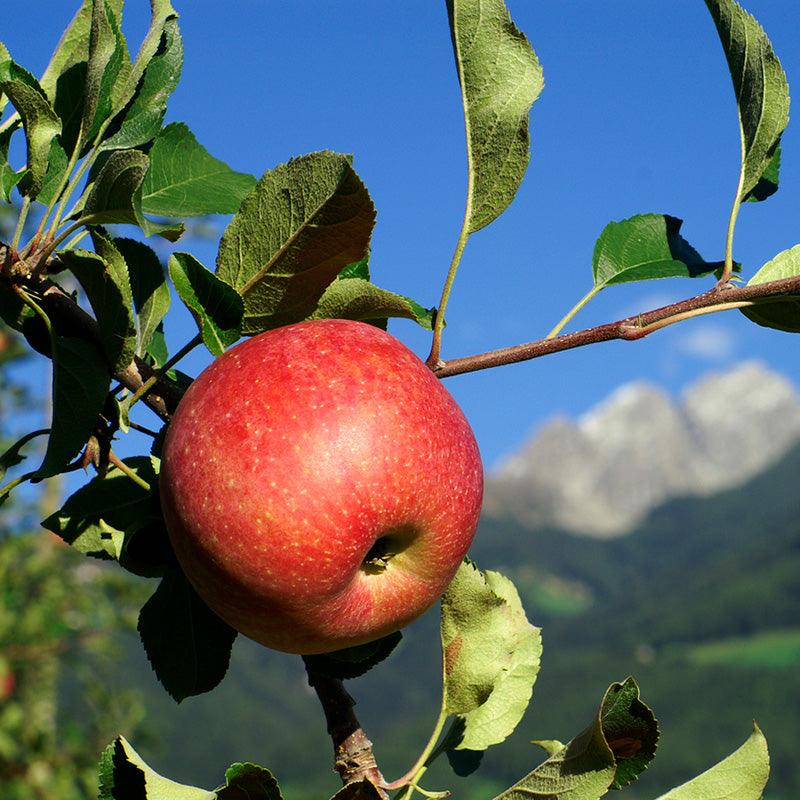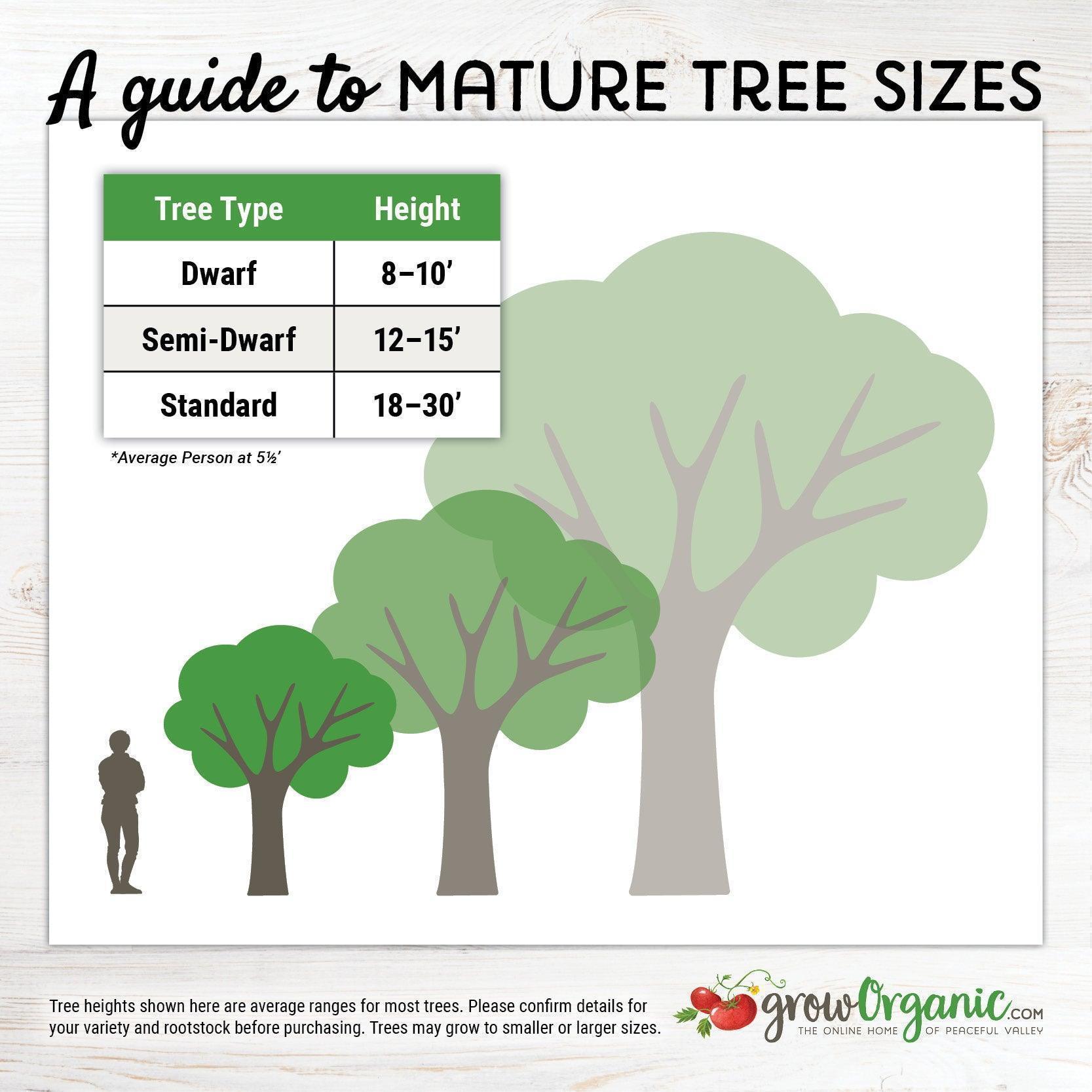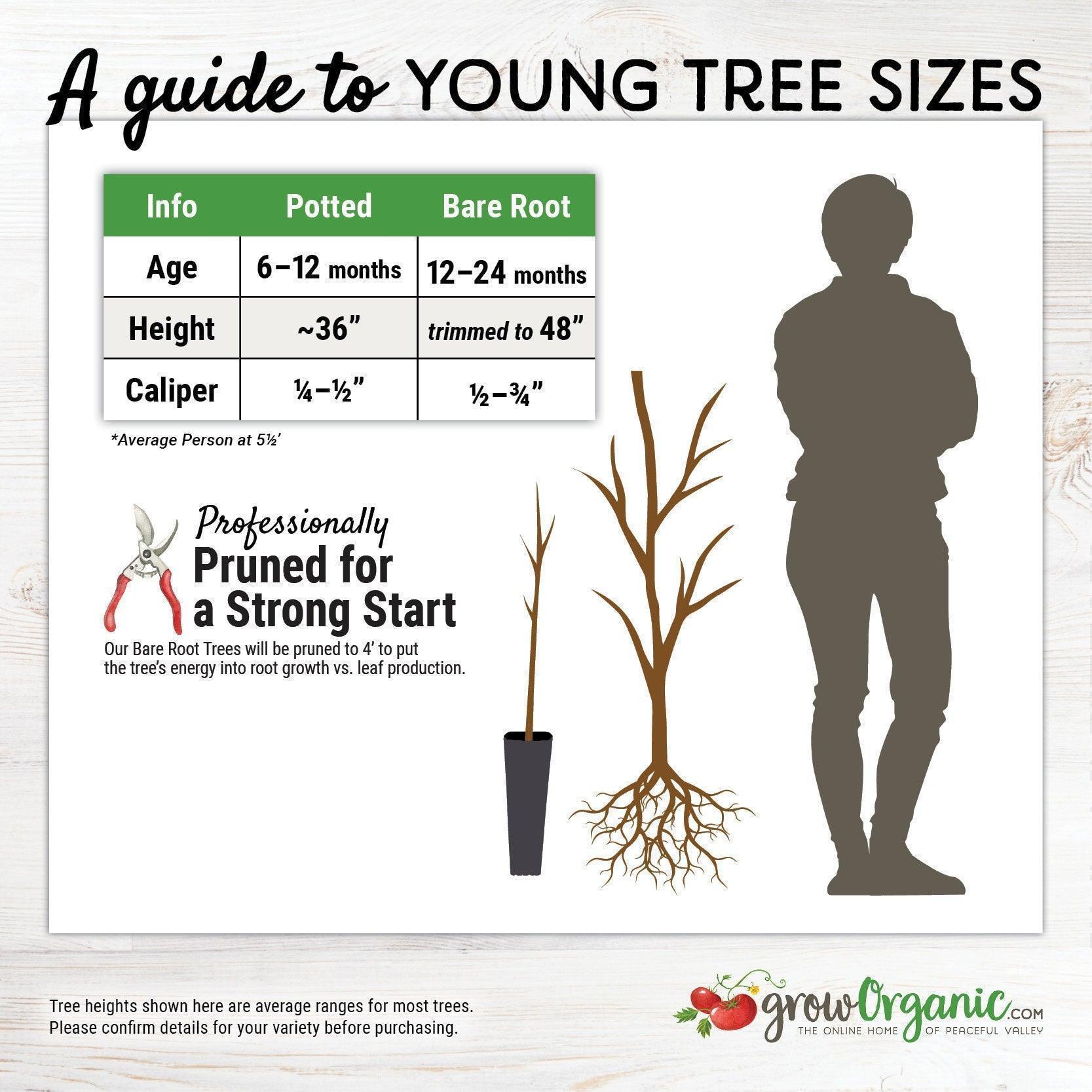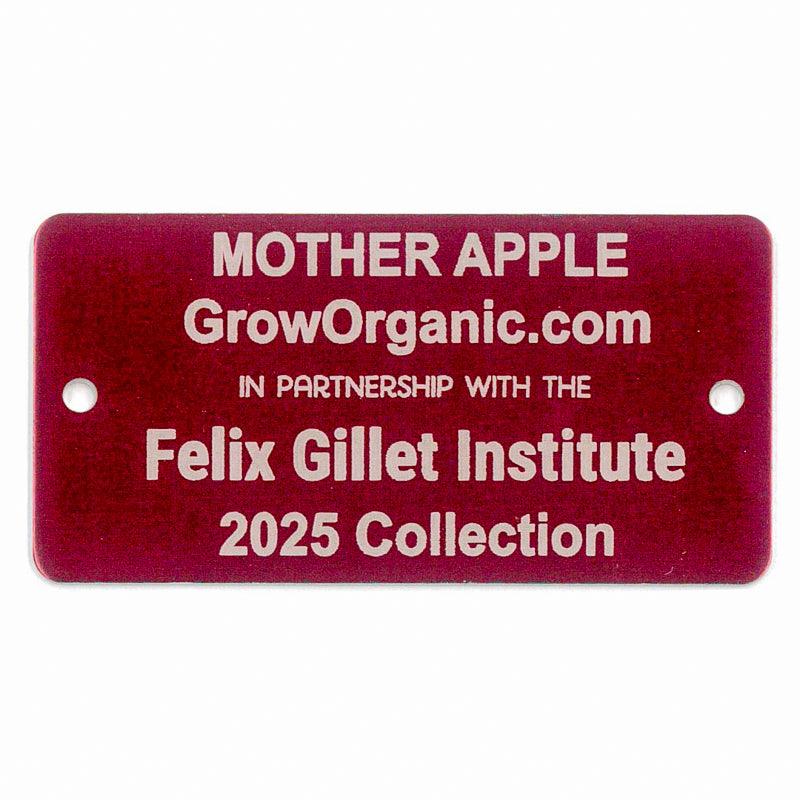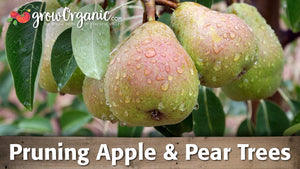Item Number: FT380
Mother Apple Tree
Grow Your Apple Haven
Every rare tree purchase supports historical orchard preservation
Limited availability—reserve up to 5 rare trees per order while supplies last
Each handpicked tree includes a durable etched metal display tag.
Standard on Domestic Apple Rootstock
The Mother Apple tree is a remarkable and historically significant variety that has been cultivated for generations. Known for its bright red, medium-large fruits, this apple tree produces some of the most delicious and well-balanced apples available. With a perfect sweet-tart flavor, crisp texture, and the ability to hang on the tree for months while retaining its freshness, the Mother Apple is a cherished addition to any orchard. This tree’s history is deeply rooted in the story of Gail's Orchard, a protected and historic site located in the middle of the Tahoe National Forest. Although the orchard is difficult to access, the legacy of these trees continues to thrive, offering a unique connection to the past.
Historical Significance and Gail's Orchard
Gail's Orchard, where the Mother Apple tree thrives, is steeped in history. Originally a summer home for the Nisenan people, this orchard later became part of an operating ranch in the mid-1800s. For over a century, cattle ranching likely contributed to the extraordinary health and vigor of the trees in this orchard, creating a unique environment where the Mother Apple tree could flourish. The isolation of the orchard, located deep within the Tahoe National Forest, has preserved the integrity of the apple varieties growing there, making them a living link to the past.
Felix Gillet, a pioneering horticulturist in California during the 19th century, played a significant role in the development and preservation of many apple varieties in the Sierra Nevada region. Although there is no direct documentation linking Gillet to the Mother Apple tree, his influence on apple cultivation in this area is undeniable. Gillet introduced and propagated a wide range of fruit and nut trees, many of which continue to thrive in the region today. The Mother Apple tree, with its historical roots in Gail's Orchard, is a prime example of the enduring legacy of the fruit trees that Gillet helped establish.
How to Grow a Mother Apple Tree
Growing a Mother Apple tree requires understanding its specific needs and providing the right conditions to ensure healthy growth and abundant fruit production. With proper care, this tree can become a valuable and productive part of any orchard.
The first step in growing a Mother Apple tree is selecting a suitable planting site. These trees thrive in full sun, requiring at least 6-8 hours of direct sunlight each day to produce high-quality fruit. The soil should be well-drained, with a pH range of 6.0 to 7.0, slightly acidic to neutral. It’s important to choose a site that offers good air circulation, which can help prevent diseases such as apple scab and fire blight, both common issues for apple trees.
Planting should be done in early spring or late fall when the tree is dormant. This timing allows the roots to establish themselves before the growing season begins. When planting, dig a hole that is twice as wide and just as deep as the root ball. Make sure the graft union, the point where the rootstock meets the scion, is above the soil line to prevent the scion from rooting. This is crucial to maintaining the tree’s grafted characteristics. Backfill the hole with soil, ensuring there are no air pockets, and water the tree thoroughly to help settle the soil.
The Mother Apple tree, like many traditional apple varieties, requires a significant number of chill hours—periods of cold weather that help the tree break dormancy and set fruit. This makes the Mother Apple particularly well-suited to regions with cold winters. In areas with insufficient chill hours, the tree may struggle to produce fruit, so it’s essential to consider your local climate when planting.
Cross-pollination is important for the Mother Apple tree to produce fruit. While the tree may produce some fruit on its own, planting another apple variety nearby, preferably one that blooms at the same time, will enhance pollination and increase the yield. Beekeeping can also play a role in boosting pollination rates and ensuring a healthy fruit set.
Watering is essential during the first few years of the tree’s life. Deep watering once a week is recommended, providing about 1-2 inches of water. As the tree matures, it becomes more drought-tolerant, but regular watering during dry spells will support continued growth and fruit production. Mulching around the base of the tree helps retain soil moisture and suppress weeds, creating a more favorable environment for the tree.
Fertilization is another important aspect of caring for the Mother Apple tree. Apply a balanced, slow-release fertilizer or organic compost in early spring, before new growth begins. This provides the nutrients needed for healthy growth and fruit development. Avoid over-fertilizing, as excessive nitrogen can lead to vigorous vegetative growth at the expense of fruit production. A balanced approach will support both the tree’s growth and the quality of the fruit.
Pruning is crucial for maintaining the health and productivity of the Mother Apple tree. Prune the tree in late winter or early spring, before the buds break. Focus on removing dead, damaged, or diseased branches, as well as any branches that are crossing or growing inward. Proper pruning allows for good air circulation and light penetration, which helps reduce the risk of disease and promotes even ripening of the apples.
Harvesting Apples
The Mother Apple tree produces fruit that ripens in September and October. One of the unique characteristics of this apple is its ability to hang on the tree for months while remaining crisp and flavorful. This extended harvest period provides flexibility for growers, allowing them to pick the fruit at the optimal time for their needs.
To harvest the apples, gently lift the fruit and twist it slightly. If the apple detaches easily from the tree, it is ready to be picked. It’s important to harvest the apples at the right time to ensure the best flavor and texture. Apples that are left on the tree too long may become overripe, while those picked too early may not develop their full flavor.
The Mother Apple is a versatile fruit that can be used in a variety of culinary applications. Its crisp texture and balanced sweet-tart flavor make it perfect for fresh eating, baking, and preserving. The apples are also well-suited for making cider, adding a rich and complex flavor to the finished product.
Storing Apples
Storing apples properly is essential for maintaining their quality and extending their shelf life. The Mother Apple is known for its excellent storage capabilities, especially when kept in the right conditions. After harvesting, the apples should be stored in a cool, dark place with good air circulation. A root cellar is ideal, as it provides the low temperature and high humidity that apples need to stay fresh over an extended period.
To store apples, place them in shallow crates or baskets, ensuring they are not touching each other. This helps prevent the spread of any spoilage that may occur. Regularly check the apples for signs of decay, and remove any that show signs of rotting to prevent them from spreading to the other fruit.
With proper storage, Mother Apples can last well into the winter, providing a fresh and flavorful fruit supply long after the harvest season has ended. This makes them a valuable addition to any homestead or orchard, offering a reliable source of food throughout the colder months.
Conclusion
The Mother Apple tree is a historically significant and highly productive variety that offers a perfect balance of flavor, texture, and versatility. Its connection to Gail's Orchard in the Tahoe National Forest adds to its allure, making it a true heritage tree with deep roots in the history of apple cultivation in California. By understanding how to grow an apple tree like the Mother Apple and taking the necessary steps to care for it, you can enjoy bountiful harvests of delicious apples year after year. Whether for fresh eating, baking, or storing apples for winter, the Mother Apple is a timeless and valuable addition to any orchard.
For more information about different types of rootstocks and how they influence tree size and growth, see our Tree Rootstock Characteristics Chart.


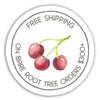
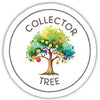
Check Your Zone Compatibility:
Compatible with your zone.
Growing Zone for

Our Guarantee To You
Since 1976, we've served our customers at every stage of growing. Please contact us at any time. We are happy to support and assist you.
Shipping Information
Shipping Information
Cannot ship to the following states: HI, AK, PR, GU, VI
Shipping Weight: 5.0 lb
Dimensions: 47.5"L x 7.3"W x 2.75"H
Features
Features
- Bare Root
- Self-fruitful
- Suited to Warmer Climates
Characteristics
Characteristics
Planting & Care
Planting & Care
Useful Information
Useful Information
Guarantee
Guarantee
Limited Dormant Tree & Plant Guarantee
* Claim deadline is June 15th
We guarantee that your dormant tree or plant will arrive in good, viable condition. If your tree arrives in substandard condition, notify us within 3 days of delivery. Please email pictures of the box, inside packaging, the tree and its roots to helpdesk@groworganic.com. We will investigate your claim and process a request to exchange or refund the damaged product.
If your dormant tree or plant has not grown new leaves by June 15th, you may be eligible for our Limited Dormant Tree & Plant Guarantee. This guarantee provides for a store credit for the purchase price of the tree, excluding shipping. Please see the Instructions below.
Important Dates:
- April 1st Dormant trees/plants must be planted in the ground
- May 15th Perform scratch test, if no new leaves have grown
- June 15th Deadline to apply for a dormant tree/plant credit
All required documentation must be received by June 15th for your claim to be considered. Claims or documentation received after June 15th will be denied, without exception. Instructions listed below
Terms and Conditions
We cannot guarantee that your tree or plant will remain alive and healthy after it is received, or bear fruit as there are too many variables in your environment that are beyond our control (i.e. soil preparation, weed and pest control, proper irrigation, chill hours, compatible hardiness for your growing zone, proper choice of pollinator, extreme weather, rodent damage, disease, etc.).
We cannot guarantee that we will be able to provide a replacement tree/plant of the same species either that same growing season or in future years. Customers are responsible for all shipping fees associated with replacement trees and plants.
If we determine that the tree you purchased directly from us is not viable, we will issue you a store credit (not a refund) for the purchase price of the affected dormant tree or plant. Shipping is not included in the dormant tree/plant guarantee. Store credits can be used to purchase any product we sell and are valid for use only until July 1st of the following year.
Historically, 98% of our dormant trees and plants grow and thrive when they have been cared for and planted using our growing guides. Dormant trees and plants must be planted in the ground by April 1st in order to be eligible for credit. If the ground in your area is still frozen solid, you may temporarily plant your tree or plant in a pot.
Potted, non-dormant trees or plants are excluded from this guarantee as they are not dormant at the time of shipment. Evergreen trees such as citrus, avocado and olive trees are not available for credit under the Dormant Tree and Plant Guarantee.
Instructions
We guarantee that your dormant fruit tree or plant will leaf out, if you care for it according to our growing guides. In the unlikely event that your dormant tree or plant does not have leaves by May 15th, follow these simple steps to apply for a store credit:
Before you call or email, please perform a “scratch test” to determine if the tree or plant is still alive. This video shows how to check for live tissue under the bark. Scratch tests need to be done a few inches above and below the graft.
Green Cambium Layer / Living Trees
If the cambium layer under the bark is green, give your tree a little more time. It is still alive, but hasn’t come out of dormancy yet. Check to make sure that it is getting the right amount of deep root water, enough sunlight and that the weather is warm enough for that type of tree/plant to come out of dormancy. Every tree has its own personality and will come out of dormancy at different times. Be sure to submit the required documentation listed below by June 15th, if it doesn’t grow leaves.
Brown Cambium Layer / Dead Trees
If the scratch test shows a brown cambium layer or if your dormant tree/plant doesn’t have leaves by June 1st, please email us at helpdesk@groworganic.com. All required documentation listed below must be received by June 15th for your claim to be considered. To be considered for the guarantee claim, all required documentation must be received by June 15th. Incomplete submissions will be denied.
Required Documentation
- Order number
- Name of dormant tree/plant and the quantity affected
- Photos of each tree or plant showing:
- The roots (tree or plant must be pulled out of the ground)
- The scratch test areas
- The entire tree/plant
We reserve the right to not issue credit for items that have already been replaced. We also reserve the right to require photographic evidence that the tree/plant was not killed by root rot, rodent or mechanical damage.
Share
